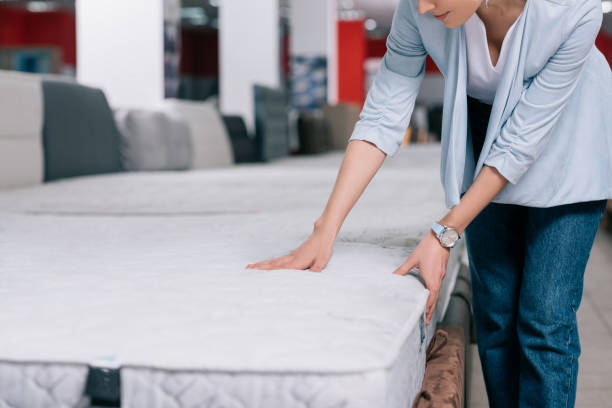A sleeping surface is a sizable, typically flat pad used for assisting someone who is lying down. It is intended to be employed as a bed or as a component of a bed when mounted on a bed frame. A dense, sewn cover consisting of a substance that is typically made of cotton, sheep’s wool, sorghum, elastomeric rubber-based products, or a springy metal framework can be used to make mattresses. The mattress may additionally be stuffed with air or liquid.
Mattresses are often positioned on top of a single base, which can be flexible or rigid according to the situation, such as a wooden base or an insulated timber and wire boxes springtime. A divan which is common in Europe combines the sleeping surface and foundation into only one upholstered, legged unit. In addition to having padding substances, divans include a minimum of one coil layer. They could be given an additional cushion or a detachable “topper”. As with futons, sleeping surfaces are also capable of being filled with air, moisture, or any kind of natural fibers.The foundation or ” backing level” and the covering or “comfort layer” are the two main components of traditional bedding. Both of these layers are encased in a thick textile known as underlining.

The sleeping surface is covered with layers of upholstery that offer warmth and padding. The insulator, the center furnishings, and the quilt make up the three components that make up the textile layer.
All-foam sleeping surfaces use different amounts and thicknesses of latex rubber foams, viscous bubbles, and bendable foams made of polyurethane with petrochemical bases. Many mattress makers now use viscoelastic and polyurethane foams that contain some plant-based material. Floor foundations are frequently used with all-foam sleepers.
Latex Foam: However, there are latex-free mattresses available without any synthetic substances derived from polyurethane resin Using neither the Talalay nor classic Dunlop technique, latex foam is made.
Memorable foam
The viscoelastic base that conforms is used in mattress memory foam atop foundation foam composed of stiffer polyurethane. Memory foam is sometimes used as the cushion layer in coil beds. The viscoelastic bubbles and the foundation foams’ weight, and composition can be changed to produce various feelings and comfort levels. Cushions made of polyurethane and memory foam each have a distinctive feel. Tension points in aching joints can be effectively relieved by such a type of mattress. Many memory fiber sleeping surfaces cost more than those with traditional springs. The temperature has an impact on memory foam as well.
Extra-dense foam
A high-density polyurethane cushion uses a more dense foam, usually made of polyurethane, which is comparable to memory foam beds. This type of bubble is primarily composed of empty cells that are closely packed. Since high-density mattress foams are denser than conventional foam mattresses, they provide warmth and resilience. Mattress sagging is eliminated and high-density foam beds with an underlying system endure more years.

